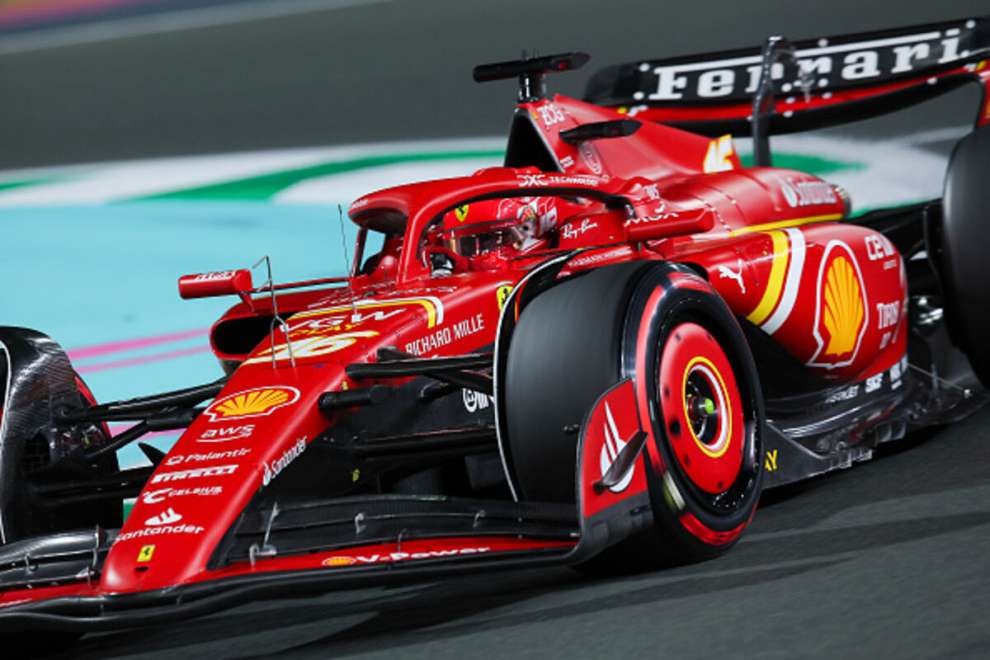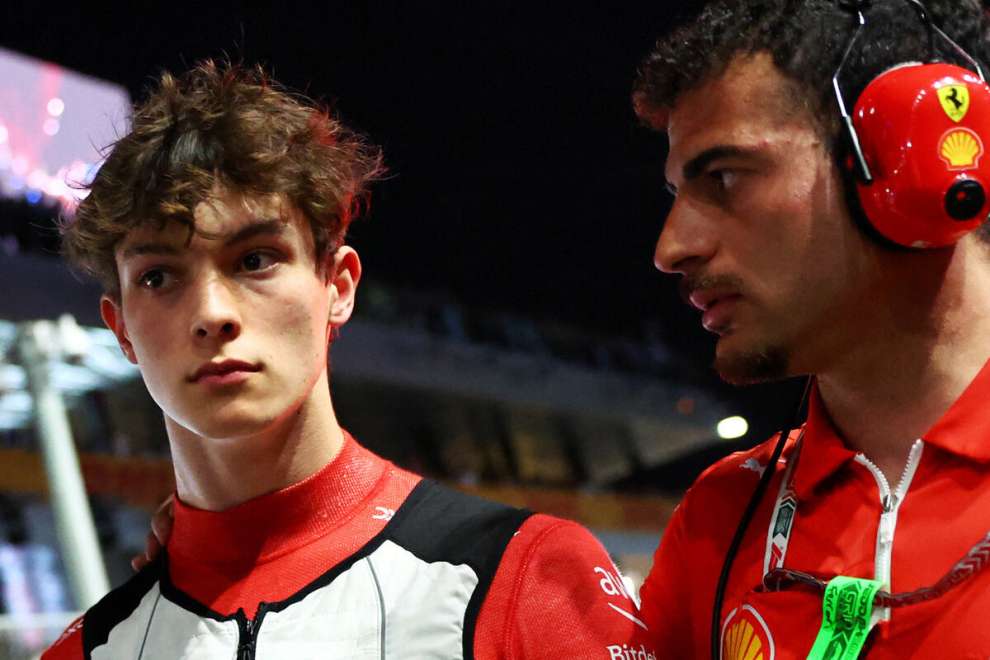By Carlo Platella
Two victories out of two for Max Verstappen, who opens his march towards his fourth world title in the best possible way. In Saudi Arabia, Red Bull shows its muscles, still strong with an important advantage, perfectly contained in the image of Perez who easily frees himself from the traffic, in which Leclerc instead loses any chance of fighting for the podium. However, Ferrari has something to rejoice about, faced with progress that was unimaginable only a year ago, with the prospect now of close the gap by the end of the season.
The Red Bull advantage
There are 18 seconds separating Verstappen and Leclerc under the checkered flag, but these numbers are misleading if not put into context. The world champion almost always travels on a clear track, freeing himself with great agility from Lando Norris on the restart, imitated shortly afterwards by his teammate. Ferrari's Monegasque took longer, spending 12 laps behind the McLaren. The difficulties of the Red they do not derive from the lack of speed in a straight line, but rather from the aerodynamic disturbance of traveling in dirty air, so much so that we are almost never able to go below one second of delay.
Once he overtook Norris, from lap 28 Leclerc was finally able to lap in clean air, offering a comparison with the leading Red Bull duo, who continued to push until lap 39 to chase the fastest lap. It is in this fraction that it emerges Verstappen's real advantage over Leclerc, around 4 tenths per lap. Only a year ago, in the same period of the race Sergio Perez lapped 1.5 seconds faster than Sainz's Ferrari, lingering in the middle of the group and distant from those in front of him.
Ferrari two-thirds of the way
The numbers tell of a important recovery by Cavallino on the curvy track in Jeddah, where in one year the gap from Red Bull drops by 70%. In the race, the SF-24 laps over 1 second faster on hard tires than the troubled 2023 Red. In the comparison, Alonso and the Aston Martin shave off 1 and a half tenths, while the two Red Bulls set identical times to the last edition, where however, the tires were ten laps cooler thanks to the late intervention of the Safety Car. However, it remains indicative that in Bahrain the world champions lapped over 2 seconds faster with the harder compounds compared to the previous edition, outlining a picture in which Red Bull hasn't made the most progress in high-speed cornersas well as in the management of degradation and agility in slow motion.
| Jeddah 2023 race pace | |||
| TOUR | Perez | Alonso | Sainz |
| 28 | 1'33''0 | 1'34''1 | 1'34''8 |
| 29 | 1'32''7 | 1'34''0 | 1'34''3 |
| 30 | 1'32''7 | 1'33''7 | 1'34''5 |
| 31 | 1'32''6 | 1'33''6 | 1'34''1 |
| 32 | 1'32''5 | 1'33''4 | 1'33''9 |
| 33 | 1'32''3 | 1'33''5 | 1'34''0 |
| 34 | 1'32''7 | 1'33''2 | 1'33''0 |
| 35 | 1'32''7 | 1'33''5 | 1'33''9 |
| 36 | 1'32''3 | 1'33''3 | 1'33''5 |
| 37 | 1'32''6 | 1'33''2 | 1'33''8 |
| 38 | 1'32''2 | 1'33''2 | 1'33''9 |
| MEDIUM DETACHMENT | / | + 1 second | +1.5 seconds |
| Jeddah 2024 race pace | |||
| TOUR | Verstappen | Leclerc | Alonso |
| 28 | 1'32''7 | 1'33''2 | 1'33''9 |
| 29 | 1'32''8 | 1'33''3 | 1'33''7 |
| 30 | 1'32''6 | 1'32''9 | 1'33''5 |
| 31 | 1'32''5 | 1'32''6 | 1'33''7 |
| 32 | 1'32''5 | 1'33''0 | 1'33''4 |
| 33 | 1'32''3 | 1'33''0 | 1'33''5 |
| 34 | 1'32''6 | 1'33''1 | 1'33''3 |
| 35 | 1'32''6 | 1'33''0 | 1'33''4 |
| 36 | 1'32''4 | 1'32''9 | 1'33''0 |
| 37 | 1'32''4 | 1'32''7 | 1'33''1 |
| 38 | 1'32''3 | 1'32''6 | 1'32''9 |
| 39 | 1'32''0 | 1'32''7 | 1'32''7 |
| MEDIUM DETACHMENT | / | + 0.4 seconds | +0.9 seconds |
A league of its own
“They're in a league of their own”, comments Hamilton via radio. Without specifying the subject, the Englishman offers a decidedly appropriate description for the advantage that Verstappen, Perez and Ferrari show in Jeddah. In this special championship, Red Bull confirms a privileged position. Verstappen won everything but the challenge for the fastest lap, which instead went to Leclerc. The choice of the heavier rear wing for Ferrari was important in this outcome, useful in keeping the tires alive until the end, while on the Red Bulls they slowly lost temperature due to wear.
Thanks to the choice to focus on greater aerodynamic load, Leclerc manages to do so in the race keep pace with the two Red Bulls in the big snake of the first sector, where he had instead struggled in qualifying. In this regard, for Ferrari it was not a temperature setting problem, as initially hypothesized and as had instead happened in Bahrain. The particular asphalt-rubber conditions present in Jeddah in fact make it complex to extract the peak grip of the tyre, which is hidden in an extremely narrow interval, with Leclerc finding himself managing an unstable rear.

Verstappen instead manages to stabilize the tire and the performance, aided in the task by a stable car, perfectly balanced and which uses the tires perfectly. At the second race, the world champions manage to extract the potential of the car, already denoting a good understanding of it. It is further evidence of a car that, although redesigned in shape, is the direct evolution of the concept over the last two yearsi, already widely known, unlike Ferrari which still has a lot to discover about the revolutionized SF-24.
Mercedes pays for the qualification
The first behind the leading trio is Oscar Piastri, who was however stuck in Lewis Hamilton's traffic for a long time. The Australian from McLaren, thanks to a better pace on new tyres, still fails to overtake, limited by poor speed on the straight of his MCL38. They are 5 km/h behind Mercedes, a problem that McLaren has been dragging on since last year. Fifth at the finish line is Fernando Alonso, who makes the most of his excellent starting position, thanks to an Aston Martin that is incisive on the flying lap but struggling over the long distance, qualities that are the opposite of those of the 2023 car. Indicative is how, halfway through the race , on new hard tires the Spaniard lapped slower than Lewis Hamilton on used medium tyres.

At Mercedes there is a taste of regret for the Arab weekend. In the race the Silver Arrows show the potential to play the role of third force, but they pay for the disappointing qualification. Russell's mistake in Q3 in fact deprives him of what he said could have been fourth position on the starting grid. The number 63 manages to manage the difficulties of the car compared to his teammate, unstable at the rear and constantly on the verge of bouncing. “The fast ones kill us”Hamilton's radio message during the race, referring not to top speed, but to taking fast corners.
The Fables of Jeddah
The great protagonist of the day, however, is Oliver Bearman. The Englishman, called into the running to replace Carlos Sainz, immediately scored in the points on his debut and without having taken part in Thursday's free practice. It is not euphemistic to call it a feat, in a Formula 1 with increasingly smaller gaps and incredibly technical between driving, tire wear and management of the thousand parameters of the steering wheel such as differential, distribution mapping, braking distribution and migration.

In Arabia it also lights up Haas with Nico Hulkenberg, which brings points to a team whose forecasts were for a start to the championship at the bottom of the group. The German thanks his teammate Magnussen, who laps several seconds off his pace to push away the chasing platoon behind the two Haas. If the Dane can afford it it is thanks to the excellent top speed of the VF-24, which in Jeddah establishes itself as the fastest car on the straight. The teams now return to bases for a mini ten-day break, precious time to reorganize data and ideas in view of a still very long season, where hierarchies may be questioned.
#Arabia #analysis #Verstappen #Ferrari #mega #recovery